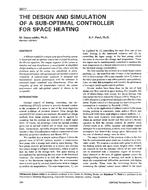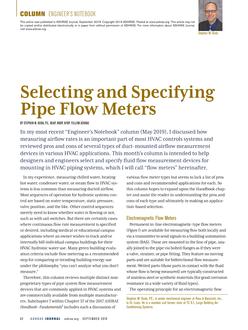District cooling systems offer advantages over individual building systems by allowing the selection of central sites close to rivers or other low summer temperature heat sinks, sites close to open spaces for cool storage, and the advantage of reducing specific chiller and cool storage costs by economy of scale. These advantages are obtained at the penalty of the cost of an additional distribution system.
This paper examines the technology status of slush iqe district cooling systems. Then, using the BNL District Heating and Cooling (DHC) Technology Characterization Computer Model with delivered energy cost as the figure of merit, a wide range of central and individual building cooling systems are compared. Slush ice district systems are found to be most competitive with sharply-peaked cooling loads, premium piping installation costs, premium storage cost, and high on-peak electric rates.
Research and develoment needs include an efficient low-cost reliable ice-making evaporator, an efficient heat-activated ice-making chiller, greater slush ice storage experience, and flow research — particularly concerning frictional factors and segregation behavior.
Citation: Symposium, ASHRAE Transactions, 1987, vol. 93, pt. 2, Nashville, TN
Product Details
- Published:
- 1987
- Number of Pages:
- 15
- File Size:
- 1 file , 1.1 MB
- Product Code(s):
- D-NT-87-15-3


